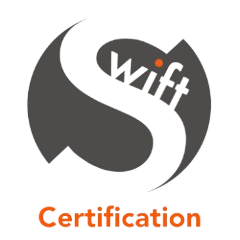Let’s be honest – many UK businesses approach ISO 45001 with one question in mind: “Will this actually help us, or is it just another compliance exercise?” It’s a fair question. Occupational health and safety management systems (OHSMS) are often seen as regulatory obligations rather than strategic assets. But when implemented with intent, ISO 45001 can drive measurable improvements in safety, morale, and even profitability.
At Swift Certification, we work with SMEs who want practical, jargon-free certification. So let’s unpack what real practitioners and industry surveys are saying, and explore whether ISO 45001 delivers a return on investment.
Measuring What Matters: Injury Rates, Risk Reduction, and Culture Change
The most obvious metric is injury reduction. When ISO 45001 is properly embedded, businesses report fewer incidents, better near-miss reporting, and faster corrective actions. But the real value lies deeper: in how the system changes behaviour.
Practitioners consistently highlight the shift from reactive safety to proactive risk management. Many report that structured safety meetings and risk assessments lead to earlier hazard identification and more open conversations with staff. In short, ISO 45001 isn’t just about ticking boxes – it should lead to changes in how people think and act.
Documented Benefits: What Industry Insights Reveal
Across safety forums, certification bodies, and practitioner feedback, several recurring benefits emerge:
1. Simplified Due Diligence for Investors and Partners
Having ISO 45001 in place makes it easier to pass supplier audits, meet tender requirements, and reassure investors. Businesses often find that certification streamlines onboarding with larger clients and improves their standing in procurement frameworks.
2. Better Risk Management and Hazard Identification
The structured approach to risk assessment helps businesses spot weak points early. From machinery maintenance to lone worker protocols, ISO 45001 provides a framework that’s easy to scale and adapt.
3. Improved Staff Retention and Morale
When employees see that safety is taken seriously – not just talked about – they’re more likely to stay. Organisations report that staff feel more valued and engaged when they’re involved in safety planning and decision-making.
4. Reduced Insurance Premiums and Legal Costs
Some insurers offer discounts for certified organisations. More importantly, fewer incidents mean fewer claims, investigations, and legal headaches. Certification can also support legal defence by demonstrating a documented commitment to safety.
These aren’t just theoretical benefits – they’re echoed in real-world experiences across industries, from manufacturing to logistics to professional services.
Honest Conversations: Where Certification Falls Short
Of course, not every ISO 45001 journey is smooth. Industry feedback highlights a few common pitfalls:
- Documentation Without Culture Change A frequent criticism is that some companies treat ISO 45001 as a ‘pay-to-play’ exercise: buying templates, passing audits, but never engaging staff. The result? A system that looks good on paper but fails in practice.
- Leadership Commitment Is Key Without genuine buy-in from senior management, the system becomes hollow. Safety becomes a side project rather than a core value. Auditors can spot this quickly – and so can see employees.
These pitfalls don’t mean ISO 45001 is flawed. They simply highlight that certification is only as strong as the culture behind it.
Practical Tips: Turning Certification into Real Workplace Improvements
So how can SMEs ensure ISO 45001 delivers real value?
- Make Leadership Visible and Accountable: Involve senior management in safety initiatives from day one. When management owns safety outcomes publicly, accountability follows. Recognize improvements openly and tie them back to leadership decisions.
- Focus on Root Cause, Not Just Compliance: When an incident occurs, dig deeper than the checklist requires. Understand why it happened and redesign the process to prevent recurrence. This transforms reactive compliance into proactive risk management.
- Engage Frontline Workers: Your shop floor, warehouse, or office staff know where the real risks hide. Create mechanisms for anonymous hazard reporting and reward identification of unsafe conditions. Psychological safety matters – people won’t speak up if they fear repercussions.
- Measure Culture, Not Just Incidents: Track near-miss reporting rates, employee engagement in safety committees, and training completion quality. A spike in reported near-misses often signals improved culture, not deteriorating safety.
- Use Data to Negotiate Insurance Costs: Document your safety initiatives, share incident data proactively with insurers, and demonstrate your commitment through measurable improvements. Insurers respond to evidence.
- Build Ongoing Communication: Safety isn’t a one-time project. Schedule regular management reviews, team briefings, and training refreshers. This keeps safety top-of-mind rather than relegated to an annual audit.
At Swift Certification, we help businesses register systems that work not just for auditors, but for real-world resilience.
Final Thoughts
So, does ISO 45001 certification deliver business value? The answer is: it can, if you let it. When treated as a living system rather than a static document, it improves safety, boosts morale, and strengthens your reputation. But it requires commitment, clarity, and culture.
Certification alone won’t change your workplace. But the process of getting there – and what you do afterwards – can transform it.
Ready for ISO 45001 certification? Let’s talk:




